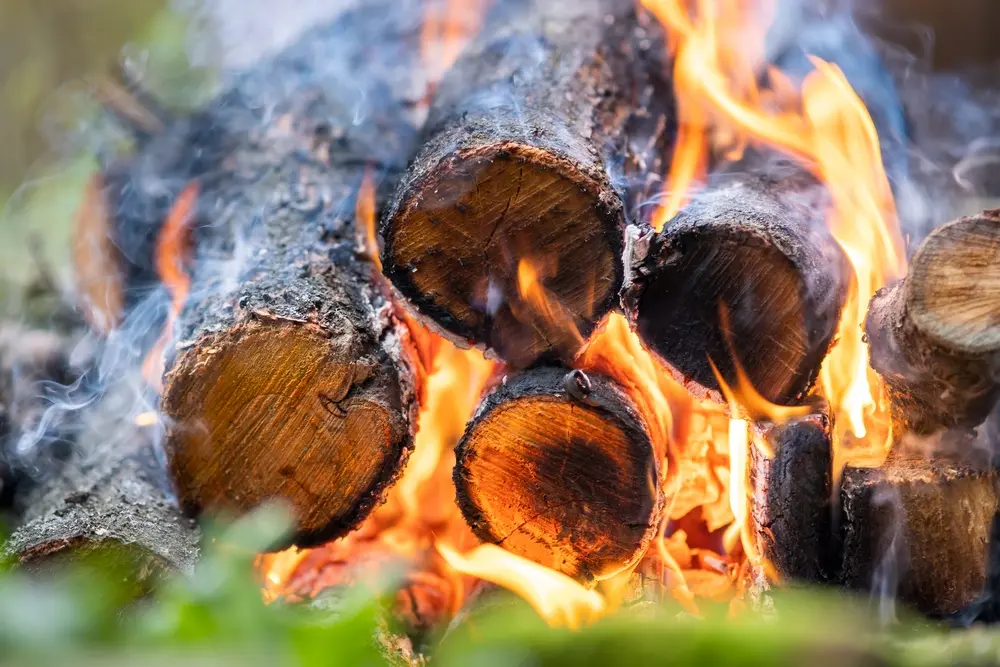Heating and Cooling
How to Choose the Best Firewood for Home Heating

A warm, crackling fire can make winter nights cozy, but choosing the right firewood ensures your fireplace or wood stove operates efficiently and safely. Here’s a comprehensive guide to selecting the best firewood, understanding its types, and using it effectively.
Firewood Basics: Types and Characteristics
Hardwood vs. Softwood
- Hardwoods (e.g., oak, hickory, maple)
- Dense, burns hotter and longer.
- Produces less smoke and creosote, making it ideal for heating.
- Best for overnight fires or sustained heating.
- Softwoods (e.g., pine, spruce)
- Light, burns quickly and ignites easily.
- Ideal for starting fires or use on milder days.
- Not as efficient for prolonged heating.
Seasoned Wood
Seasoned wood has been dried for 6–12 months to reduce moisture content. Properly seasoned wood burns efficiently and minimizes creosote buildup, reducing chimney fire risks.
Signs of seasoned wood:
- Bark peels off easily.
- End grain has cracks or splits.
- Wood appears grayish rather than fresh-cut.
- Produces a hollow sound when tapped.
Best Firewood for Heating
1. Oak
- High heat output and long burn time.
- Dense structure resists ignition but burns consistently once lit.
- Ideal for wood stoves and overnight fires.
2. Hickory
- Comparable to oak in heat and burn time.
- Emits a pleasant aroma when burning.
- Tough to split but worth the effort for its efficiency.
3. Maple
- Clean-burning with moderate heat output.
- Easier to split and readily available in many areas.
- Suitable for both heating and ambiance.
4. Ash
- Burns well even when not fully seasoned.
- Easy to split and seasons quickly.
- Provides steady heat and long-lasting flames.
5. Cherry
- Produces a sweet aroma and attractive flames.
- Lower heat output but clean-burning.
- Ideal for ambiance or mixing with other woods.
Factors to Consider When Choosing Firewood
BTU Rating
The British Thermal Unit (BTU) measures heat output. Higher BTU ratings mean more heat but may come with higher costs.
Wood Type BTU (per cord) Hickory 27.7 million Oak 24.0 million Maple 24.0 million Ash 24.0 million Cherry 20.0 million
Availability
Choose firewood that’s abundant in your area to reduce costs and environmental impact. Local wood is often fresher and better suited for your climate.
Ease of Splitting
- Straight-grained woods like ash and maple are easier to split and stack.
- Hardwoods like hickory may require more effort.
Cost Efficiency
- High-BTU woods are cost-effective in the long run.
- Factor in purchase price, transportation, and processing effort.
Proper Firewood Storage and Seasoning
Storage Tips
- Use a raised rack to keep wood off the ground.
- Ensure airflow around the stack to prevent moisture retention.
- Cover the top of the pile with a tarp, leaving sides open for ventilation.
Seasoning Guidelines
- Split wood before stacking to increase surface area.
- Stack in a single row with the bark side up.
- Use a moisture meter to check for 20% or less moisture content.
Fire Safety Tips
- Burn only seasoned wood to reduce creosote buildup.
- Have your chimney inspected and cleaned annually.
- Dispose of ashes in a metal container placed on a non-combustible surface.
- Never use flammable liquids to start a fire.
- Use a fireplace screen to contain sparks.
Alternative Wood Products
Manufactured Logs
- Made from compressed sawdust and wax.
- Burn cleanly and produce less creosote.
- Convenient but less authentic than natural wood.
Wood Pellets
- Designed for use in pellet stoves.
- High heat output with low emissions.
- Compact and easy to store.
Conclusion
The best firewood depends on your heating needs, local availability, and budget. High-quality hardwoods like oak, hickory, and maple provide excellent heat and efficiency, while softer woods and manufactured products offer versatility. By properly selecting, storing, and using your firewood, you can enjoy safe and efficient heating all winter long.
Explore more home improvement tips on our website for expert advice.
